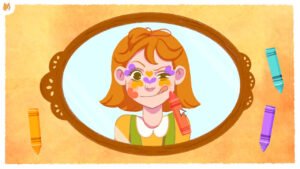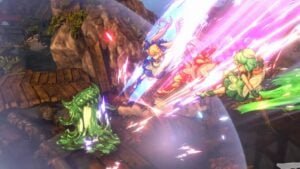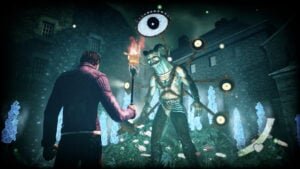BioWare is a source of national pride for Canada as it has quickly risen through the ranks of the gaming industry to become one of the premiere developers in the world.
Their mix of in depth character and narrative with substantial RPG gameplay has put them on high on the radar of both critics and gamers alike. In recent years, they’ve also embraced add-ons for their games with the release of downloadable content for titles such as Dragon Age and Mass Effect. But what goes into the creation of these meaty additions to such high profile games? In the first of a two part interview, we talk to two members of the BioWare team about the creation of the DLC, and how the process works.
CGMagazine: So tell us who you are, and what you do over at BioWare.
Patrick Weekes: I’m Patrick Weekes, a senior writer at BioWare. In addition to plotting storylines and writing dialog, I also work on things like the journal system, the enemy combat barks, and the writing end of persuades and Paragon/Renegade rewards.
Dave Feltham: And I’m Dave Feltham a senior designer at BioWare. A Senior Designer can be many things, but in my case I’m a Level Designer: I work closely with the writers and level artists to establish the flow, pacing and spacing of a level, script combats and level events and polish the level to ship. By the time a level is done we have worked with all departments in some form to get their work in the level.
CGMagazine: What previous titles have you worked on?
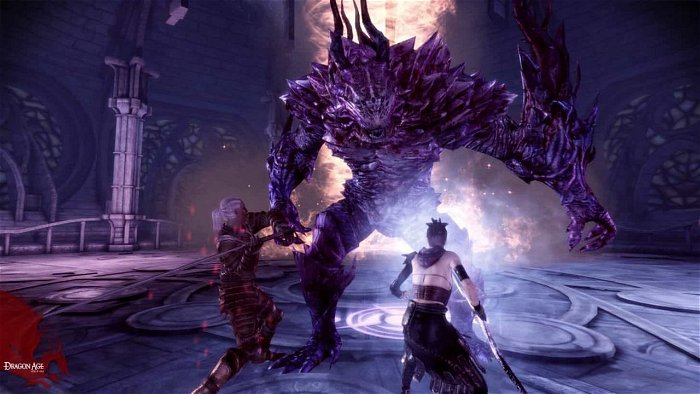
PW: I did a tiny bit of early design work on Dragon Age: Origins when I first came to BioWare, but I’ve primarily been part of the Mass Effect franchise. I was on Mass Effect and Mass Effect 2, as well as the Lair of the Shadow Broker DLC.
DF: I’m old. After 3 years of broadcast design in the late 90s I moved into games and I’ve shipped Cel Damage for the original Xbox, Cel Damage: Overdrive for the PS2, Full Auto for the Xbox 360, Full Auto 2: Battlelines for the PS3, Mass Effect 2 and of course the Shadow Broker DLC.
CGMagazine: What’s the general timeframe for working on DLC? How early into the creation of the “base game” do people start working on additional DLC for the title?
PW: It depends on what phase of the project you’re talking about. We started pitching plot proposals for the Mass Effect 2: Shadow Broker DLC in late February and March [2010], and the writing team did most of its work in April and May.
These projects are massive team efforts, and in a lot of cases, we have to do some juggling. You can do some writing in theoretical white rooms, but if you want the dialog to really work, you need to be able to see it in-level. Because of that, the writers had to wait for level designers to come off of Overlord before we could really get going. So there’s a lot of stop-and-start. (For the writers, anyway. The level designers are almost always in high demand.)
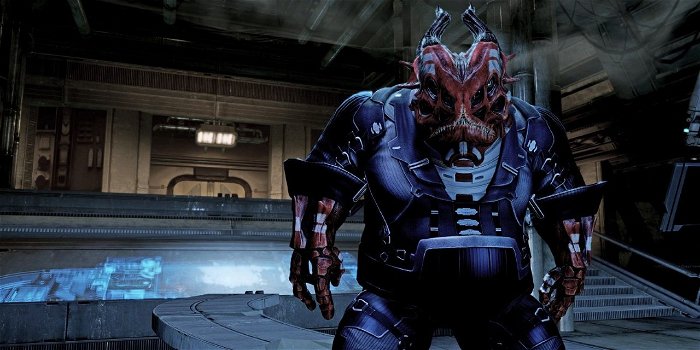
DF: As Patrick said it really depends on the project and really the DLC itself. Zaeed, for example was one of the DLCs I worked on. It was ‘Day One’ DLC and while many people might think that that was done as part of the game, we started working on it once the main content was done. We continued working on it beyond the main game certification submission. Zaeed was done in a few months, while Shadow broker was more than half a year.
CGMagazine: How much advance planning goes into the creation of DLC for a game? Is it decided from the outset, even at the concept stage of a game like Dragon Age 2 or Mass Effect 3, “Okay, we’ll have four DLC packs to add on at a later date,” or is there some flexibility in the process?
PW: It really depends on the DLC. For Overlord, the team started with the idea of using the geth to tell a psychological horror story, and it grew from there into what we shipped. The basic concept was established pretty early, but the specifics – the geth ship, or using the Hammerhead, or even the specifics of what the virtual world was like – all of that went through multiple iterations before we got to what we thought was best. That left the team there a lot of flexibility.
With the Shadow Broker DLC, we knew before we shipped that we were going to do something with Liara. We knew that we wanted to build on what our lead writer, Mac Walters, had done in the Redemption comics with Dark Horse, and we knew that we wanted to have either Shepard or Liara take over as the Shadow Broker. We knew all that a year before Mass Effect 2 shipped, so it gave us a good target, but we still had a lot of room to determine the pacing and the flow of the levels. How and where we wanted to take down the Shadow Broker, how to play Shepard and Liara off of each other – we got to tune all of that to make the best possible story.

DF: So the idea is that after the basic plot is laid out the writer works with a senior level designer on flow. So after I had worked on some prototyping for Mass Effect 3 and Patrick had worked out the basic outline for the plot, he and I worked together to figure out the flow of the entire DLC. We bantered around ideas and submitted them to our leads for feedback. Eventually as people became free from the Overlord DLC they hopped on and helped Patrick and I flesh out our initial high level ideas, inserting their own specific designs of what they’d like to see until eventually the levels were divided up to the team and were designed as what you saw in the DLC.
CGMagazine: What would you describe as the difference, if any, between BioWare DLC and that of other games? For example, do you think that Shadowbroker is different from Claptrap’s New Robot Revolution? Or the Battle of Forli released by Ubisoft for Assassin’s Creed 2?
DF: I can’t specifically remark to the named DLC as I haven’t played them. But –
PW: I think that most companies put out DLC that plays to their strengths.
DF: Yeah exactly. The Grand Theft Auto 4 DLC has to be some of my favourite stuff. Not only because it stood by itself, but because it expanded the world and it concentrated on what Rockstar does best: narrative, sense of place and fantasy fulfillment. I can’t tell you how happy I was to be able to play the leader of a motorcycle gang, listening to Death Metal. WOOOO!
“BioWare’s strength is in our ability to create emotionally compelling narratives”
PW: BioWare’s strength is in our ability to create emotionally compelling narratives, and every DLC we’ve put out has played to those strengths, with the brutal ending of Overlord and the character arc Liara goes through on the Shadow Broker DLC.
DF: And there’s never enough time to prototype. Ever. Even when we get enough time, it’s not enough time. You always want more. So DLC is where we can try out new things
PW: On the gameplay front, I think that our DLC is really where we test our limits and explore things we might not risk in a full game, like Dave’s car chase, or the heist-caper element of the Kasumi DLC.
DF: But all in all BioWare wants to give players a chance to explore their Shepard and their relationships with the characters and the Mass Effect world. And every nut of an idea is based around that.
CGMagazine: BioWare is one of the few developers that takes player choice into account in an extensive manner, how does this impact the design and difficulty of creating DLC? Is there a formula, percentage or some other methodology of determining what decisions might be reflected in the DLC? For example, in the recent Dragon Age: Golems of Amgarrak DLC it seemed like very little in the way of player decisions touched on the DLC at all, whereas something like the recent Witch Hunt DLC is closely tied into player choice towards the end game.
PW: It really depends on the narrative, and whether that narrative can react to player choices in a way that feels natural and not tacked-on. In a combat-heavy mission, you likely won’t have time for a lot of dialog that reflects choices the player made… although Dave worked on the Zaeed DLC, in which a major player choice actually changed the way the player progressed through the level.
“…What loyalties you do, how you deal with your party’s conflicts, can change the outcome of Mass Effect 2”
DF: For sure. One of the things I like and our director Casey Hudson always likes is impactful and progressive player choice. How does the player’s reactions and actions affect the ending of the game or in Zaeed’s case, the end of the level. I mean you can see this in Mass effect 2 as a whole: what loyalties you do, how you deal with your party’s conflicts, can change the outcome of Mass Effect 2. In Zaeed the main discussion Jay Turner and I had about that level was that Zaeed was a conceited jerk and why would Shepard side with him? Well in actual fact, Paragon Shepard wouldn’t…but Renegade Shepard might – if it benefited his end goal. And so we put in that moment where you can choose to keep Zaeed loyal by ignoring the victims, or you can rescue the victims and piss him off.

PW: Plus you got to punch someone as a Paragon Interrupt. Any time the Paragon players get to be in on the face-punching action, you know things are going well.
DF: I enjoyed punching Zaeed. A lot. But that’s what it boils down to: player experience. Focusing and understanding on the type of experience a player would want in a level, whether it’s through combat, conversation or exploration. What would keep them entertained and emotionally engaged. Part of being emotionally engaged is ensuring that we respect and identify that a player’s alignment will change what they want to do in a level, and if we keep that in mind when designing a level you’ll reflect a player’s choice.
CGMagazine: In a related vein, is there ever a mandate to create DLC specifically with player choices in mind?
PW: I don’t think there’s a mandate, but again, some plots are just cooler when you can reference earlier choices (like Dragon Age’s Witch Hunt, or when talking with Liara about past events). In DA’s Golems of Amgarrak or Overlord, though, the self-contained nature of the plots limited the amount of choice-referencing that designers could use.
DF: I’d love to see a Fable 2 DLC where we find out what happened to that missing hairdresser.


